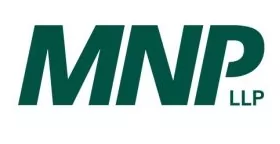In my practice, clients are often unaware that it is possible to choose the proceeds of disposition of the transfer of assets to a corporation or a partnership. When a Canadian resident taxpayer transfers certain assets to a corporation or a Canadian Partnership (referred to as a transferee) it is possible to rely on a 'rollover' for tax purposes where the property can be transferred for proceeds anywhere between tax cost and Fair Market Value (FMV).
The vendor will receive consideration from the transferee with FMV equal to the FMV of the property transferred, thus they are in the same net position. The transferee receives the property with a cost equal to the agreed proceeds disposition to the transferor. Essentially, the corporation is in the same position as the transferor with respect to the cost and FMV of the asset, while the consideration received by the transferor has the same tax attributes with respect to cost and FMV as the assets transferred. Thus, the transaction is referred to as a rollover. It is ultimately a deferral of tax – the tax is not paid today, but will be paid some day when the assets or shares are sold.
If the FMV of an asset exceeds its cost amount, tax would be incurred on a disposition, absent using a rollover provision. In addition to the possible income tax consequences, there may be sales tax issues that must be considered. When implementing a rollover, the vendor and purchaser must jointly agree on the proceeds of disposition of the transferred assets on a joint election that is filed with Canada Revenue Agency (CRA).
When transferring to a corporation, a portion of the consideration must include shares. When transferring to a partnership, a similar requirement exists where a portion of the consideration must include partnership interests. Other consideration may include debts assumed, promissory notes, etc. The consideration will equal the FMV of the transferred assets. A rollover is available on the transfer of many types of assets, some of which include capital property (i.e. shares, partnership interests, real and depreciable property), intangible assets such as goodwill and quota, certain types of resources properties and inventory used in a business. Interestingly, it is possible to transfer land inventory to a partnership, but not a corporation.
Rollovers can be used in many types of situations, from a relatively simple private scenario to a large, complex, public transaction. It can be used to transfer assets from a proprietorship to a corporation or partnership, to transfer shares of an operating company to a holding company and to assist in a sale of a business. Often in M&A scenarios, there may be a requirement for the vendor to take back shares of the purchaser as part of the consideration. In this situation, a rollover is often used to ensure tax is not incurred if there is no cash consideration. Recently, many investors were involved in the rollover of publicly traded partnership units of Inter Pipeline Fund to a corporation. If they filed a joint election with Inter Pipeline Ltd., it was possible to transfer their partnership units to the company on a rollover basis. The tax will then be triggered on the eventual sale of the shares of Inter Pipeline Ltd., not on the transition from the partnership to the corporation.
There are many complexities to consider when transitioning business structures and a rollover may be available to defer tax. This is a very specific, rule-driven area of the Income Tax Act and should not be contemplated without competent tax professionals.
The content of this article is intended to provide a general guide to the subject matter. Specialist advice should be sought about your specific circumstances.

